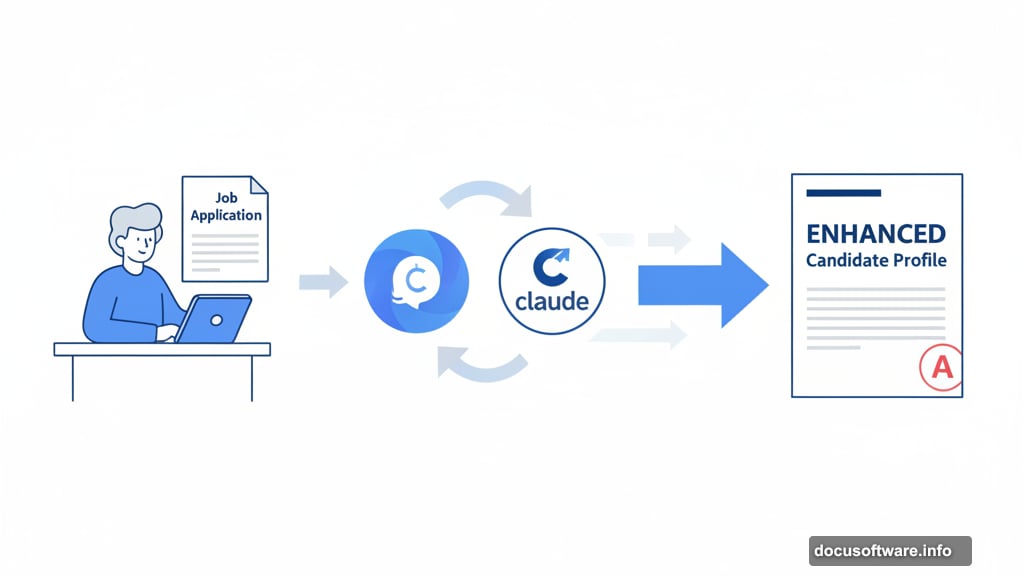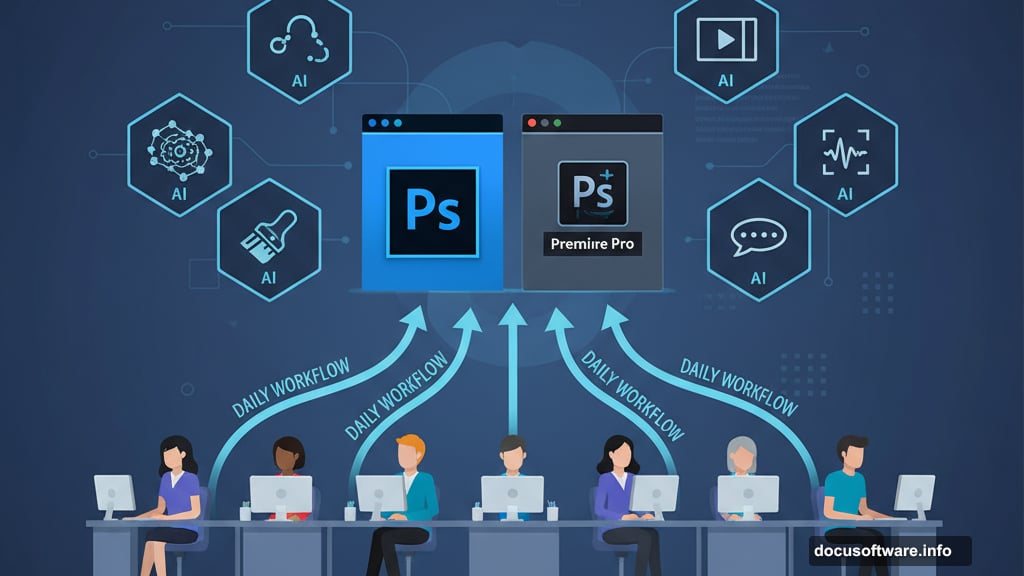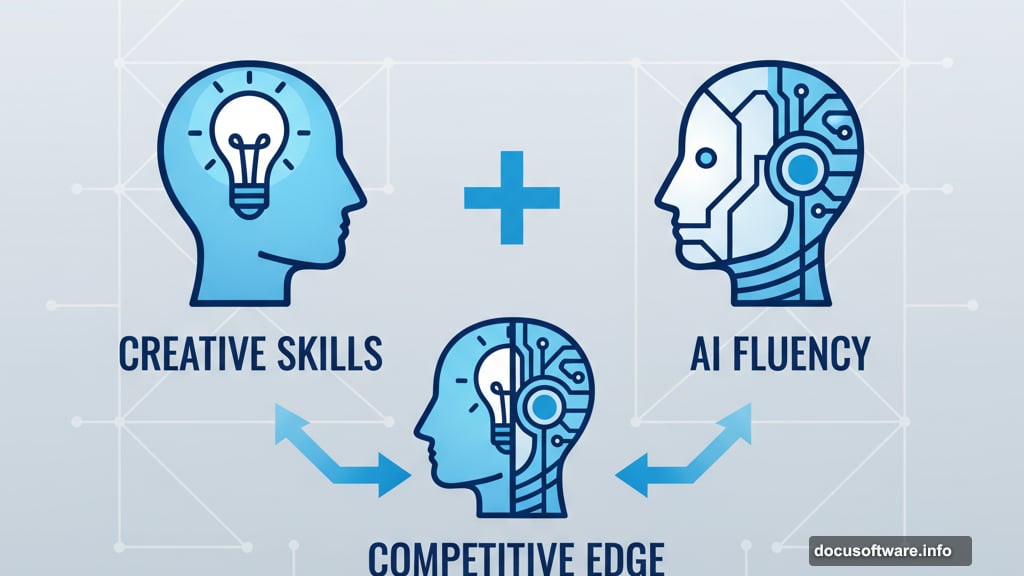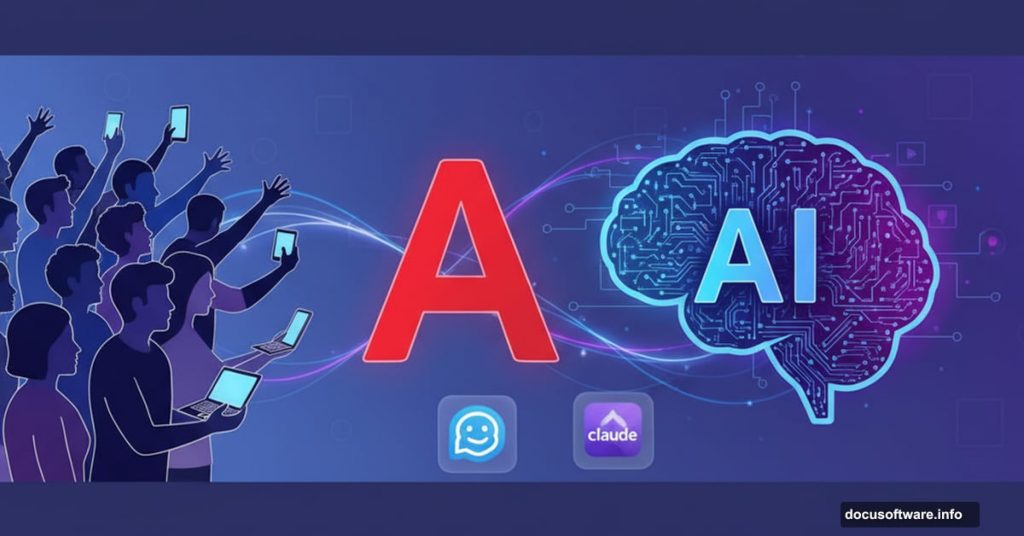Most companies panic when job candidates use AI during hiring. Adobe does the opposite.
The $141 billion software giant actively hunts for applicants who leverage AI tools in their interview process. Not just listing the skills on a resume, but actually deploying ChatGPT or Claude to polish assignments and showcase capabilities.
This represents a massive shift in how elite tech firms think about AI and hiring. So what does it mean for everyone else trying to land a job?
The Executive Who Wants You Using AI
Stacy Martinet runs communications at Adobe. She oversees hiring for roles spanning social media, content creation, and brand strategy.
Her philosophy? Candidates who use AI aren’t cheating. They’re demonstrating the exact skills she needs.
“As AI reshapes how we communicate, market, and create, those who pair creative skills with AI fluency will have a competitive edge,” Martinet told Fortune. Plus, that combination is exactly what Adobe looks for in new hires.
Here’s how it works in practice. During interview rounds, Adobe often asks candidates to complete mini projects or skills tests. Maybe creating sample social media content. Or drafting a communications strategy.
Most companies expect purely human work. But Martinet actively values when applicants enhance their submissions with AI assistance.
“If someone comes to me and they’re like, ‘Hey, I made you this content for your social media channels, and I used AI as part of this,’ I would say, ‘That’s excellent,'” she explains.
The key? Candidates need to show they’re augmenting their abilities, not replacing them. AI becomes a tool that amplifies human creativity and strategic thinking.
Why This Approach Actually Makes Sense
Adobe’s stance sounds radical compared to most hiring managers. But it tracks with how work actually happens now.
Think about it. Every Adobe employee uses AI daily in their job. The company builds AI tools into its flagship products like Photoshop and Premiere Pro.

So why would they expect candidates to pretend AI doesn’t exist during interviews? That creates a weird disconnect between the hiring process and actual work.
Instead, Adobe tests whether applicants can effectively collaborate with AI. That’s the real skill that matters on day one.
“If someone hasn’t used AI, it’s not a hard ‘no,’ but they’re going to have to use it in their job,” Martinet notes. Therefore, early adoption signals adaptability and forward thinking.
This philosophy extends beyond just accepting AI use. Adobe actively seeks candidates who experiment with the tools in creative ways.
The company wants people who push boundaries. Who figure out novel applications. Who treat AI as a collaborator rather than a crutch.
“What are the new things that are unlocked from this technology that we haven’t even dreamed of yet?” Martinet asks. “The people who dream that up are creating the future around this.”
How Other Tech Giants Handle AI in Hiring
Adobe isn’t alone in embracing AI during recruitment. But the landscape remains messy and inconsistent.
Take Anthropic, the company behind Claude AI. Originally, they banned AI use during applications entirely. Job postings explicitly stated: “Please do not use AI assistants during the application process.”
The reasoning? Anthropic wanted to assess “non-AI-assisted communication skills” without technological help.
But by July, the company completely reversed course. Now Anthropic actively encourages candidates to use Claude for resumes, cover letters, and applications.
“At Anthropic, we use Claude every day, so we’re looking for candidates who excel at collaborating with AI,” their updated guidelines explain. However, they still restrict AI during assessments and live interviews.
That makes sense. The company wants to see how you think and communicate in real-time. But polishing your written materials with AI? That just demonstrates practical skills.
Meanwhile, traditional finance firms maintain stricter policies. Goldman Sachs sent emails to university recruits this June explicitly prohibiting AI use.
“Goldman Sachs prohibits the use of any external sources, including ChatGPT or Google search engine, during the interview process,” the message read.

So candidates face wildly different expectations depending on the company. Tech firms increasingly embrace AI. Finance and consulting often ban it. Other industries remain confused and inconsistent.
What Job Seekers Should Actually Do
This creates a genuine dilemma for anyone hunting for work. When should you use AI? When should you avoid it?
First, research the company’s stated policy. Some organizations explicitly allow or ban AI during hiring. Follow those guidelines precisely.
But what about companies without clear rules? Here’s my take after talking to dozens of hiring managers.
Use AI for initial drafts and brainstorming. Let it help you structure cover letters or prepare for common interview questions. These tasks benefit from AI assistance without compromising your authentic voice.
However, never submit AI-generated content without significant editing. The output should sound unmistakably like you. Add personal examples, specific insights, and your unique perspective.
Most importantly, be transparent when appropriate. If a company values AI skills—like Adobe clearly does—mention how you used the tools to enhance your work.
For roles at tech companies, AI literacy increasingly signals competency. For other industries, read the room more carefully.
Also remember that AI detection tools remain unreliable. Companies trying to catch AI use often can’t distinguish between polished human writing and AI output. So focus less on hiding AI use and more on ensuring quality work.
The real question isn’t “did you use AI?” It’s “can you do the job effectively?” Prove that capability however you can.
The Bigger Picture About AI and Work
Adobe’s approach reflects a fundamental truth about modern work. AI isn’t going anywhere. Fighting against it makes no sense.
Companies need employees who adapt quickly to new tools. Who experiment with emerging technology. Who figure out practical applications before competitors do.

That’s why Martinet prizes candidates who already deploy AI creatively. They demonstrate adaptability—arguably the most crucial professional skill right now.
This trend will only accelerate. More companies will adopt Adobe’s mindset as AI becomes standard across industries.
Within a few years, rejecting AI during hiring might seem as outdated as banning calculators for finance roles. The tool simply becomes part of the expected toolkit.
But here’s what worries me. Not everyone has equal access to premium AI tools. ChatGPT Plus costs $20 monthly. Claude Pro runs $20 monthly. Google’s advanced Gemini requires payment.
So companies favoring AI-fluent candidates might inadvertently disadvantage applicants who can’t afford subscriptions. That creates new barriers in hiring that don’t exist today.
Adobe and other firms should consider this equity issue. Maybe providing AI access during the interview process. Or focusing on creativity and strategic thinking rather than tool proficiency.
Because ultimately, technology should amplify human potential. Not determine who gets opportunities in the first place.
What This Means for Your Career
Whether you’re job hunting now or planning ahead, this shift demands attention. AI literacy matters increasingly for career success.
Start experimenting with these tools today. Not just for job applications, but for actual work. Figure out where AI helps versus where it falls short.
Build a portfolio showcasing how you combine human creativity with AI capabilities. Document projects where you used these tools effectively.
Most importantly, develop strong judgment about when AI adds value. The people who succeed won’t be those who blindly defer to algorithms. They’ll be those who know exactly when human insight matters more.
That’s the real skill Adobe seeks. Not just AI fluency. But the wisdom to blend human and machine capabilities strategically.
Companies like Adobe are betting on candidates who embrace this hybrid future. Not because they’re replacing humans. But because they’re creating something neither humans nor machines could build alone.
That’s the competitive edge that actually matters. And it’s available to anyone willing to experiment and adapt.
